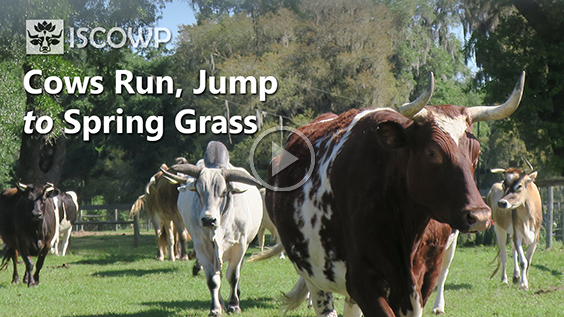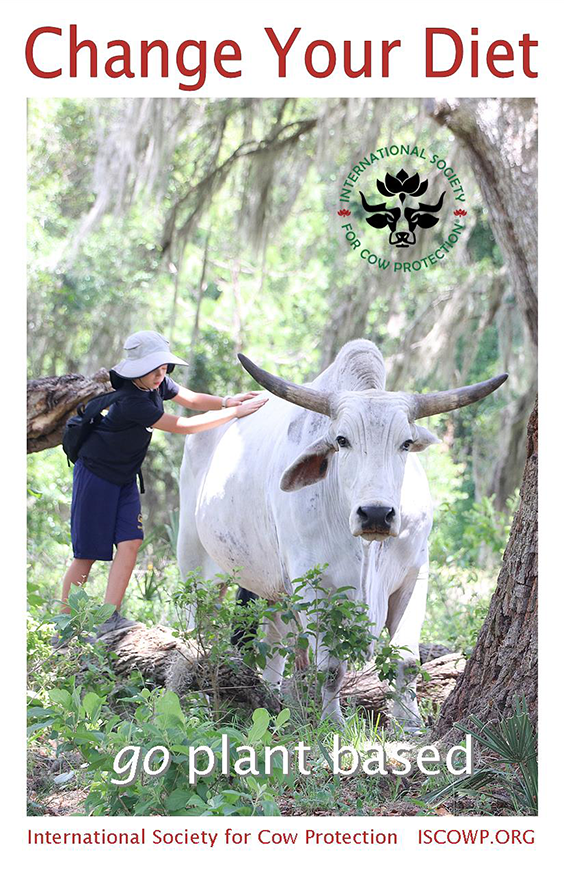- ISCOWP E-newsletters
The $50,000 Matching Gift Challenge, the additional $15,000 Matching Gift Challenge, and the Feed the Cows Campaign were all compl...

We called the cows to the fresh spring grass of the back pasture. Happy cows ran, jumped, and mooed their joy! Once they reached the spring grass, they munched to their heart’s content. All winter they have been eating hay with an occasional mouthful of grass from under the trees or from the front pasture when the weather turned warmer than usual. Lila shows us how blue flowers taste great too! Now from our back windows, we can watch the cows munching contentedly on the fresh spring grass.
ISCOWP News
We published a Change Your Diet, Go Plant Based booklet in 2017. By popular request for distribution, we have revised and updated the 2017 edition. Click here or the photo below to access the PDF file online on our website. Please contact us if you would like to distribute this booklet in hard copy. Changing your diet can tremendously help cows and it’s free!
 About the Meat and Dairy Industries
About the Meat and Dairy Industries
Which Foods Have the Largest Impact? Meat and dairy, particularly from cows, have an outsize impact, with livestock accounting for around 14.5 percent of the world’s greenhouse gases each year. That’s roughly the same amount as the emissions from all the cars, trucks, airplanes, and ships combined in the world today.
In general, beef and lamb have the biggest climate footprint per gram of protein, while plant-based foods tend to have the smallest impact. Pork and chicken are somewhere in the middle. A major study published last year in the journal Science calculated the average greenhouse gas emissions associated with different foods. The average greenhouse gas impact (in kilograms of CO2) of getting 50 grams of protein from: Beef = 17.7, lamb = 9.9, farmed crustaceans = 9.1, cheese = 5.4, pork = 3.8, farmed fish = 3.0, poultry = 2.9, eggs = 2.1, tofu = 1.0, beans = 0.4, and nuts = 0.1. These are some of the facts included in ISCOWP’s Change Your Diet, Go Plant-Based booklet. Original information from, Poore and Nemecek, Science.
About Cows
Not only can cows tell the difference between other cows, they also demonstrate a concept of species. That is, they can organize “cows” into a conceptual group distinct from other kinds of animals, and they can accomplish this mental organization even with the visual differences in individual cows’ appearances. In just a few testing sessions, cows discriminated between photographs of various kinds of cow faces from the faces of members of other species. 21 In another study, heifers differentiated between two-dimensional images of familiar and unfamiliar cow faces. 22 This finding is particularly striking: It suggests that the cows could mentally sort the images of cow faces into the categories “familiar” and “stranger.” This study also suggests that the cows treated the images as visual representations of real individuals, much as we would likely interpret a family photograph in a neighbor’s home as a visual representation of an actual family. The Someone Project